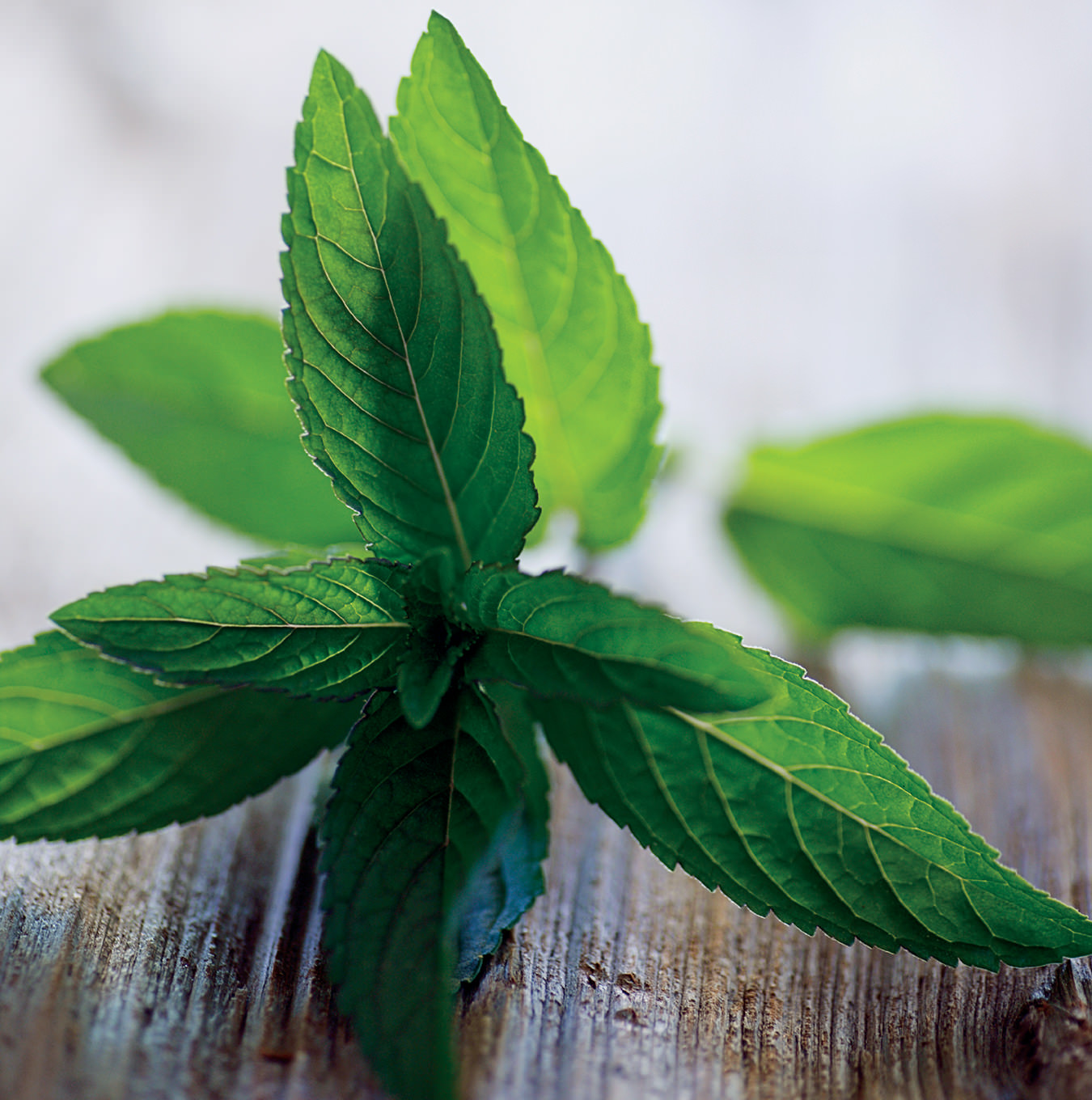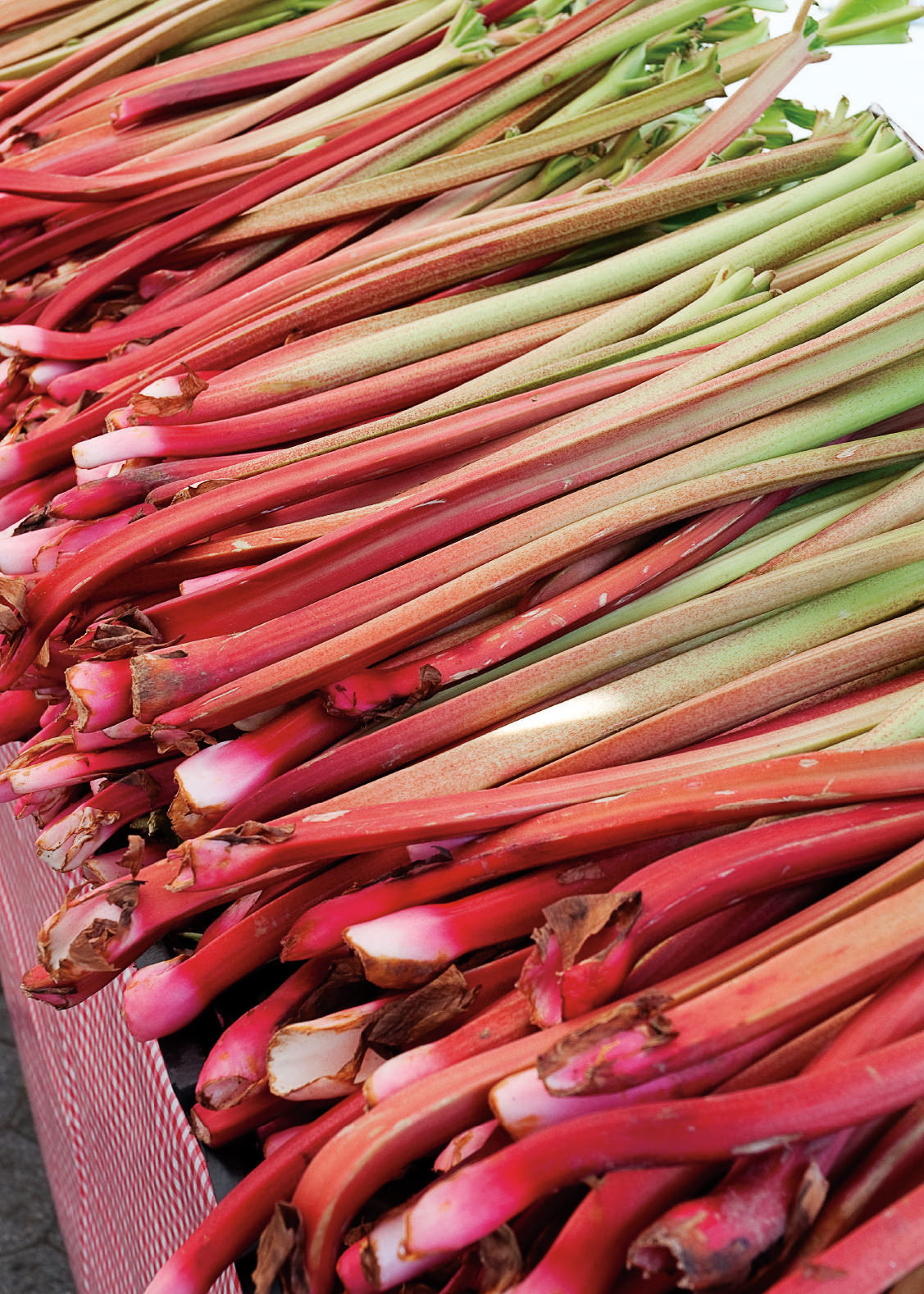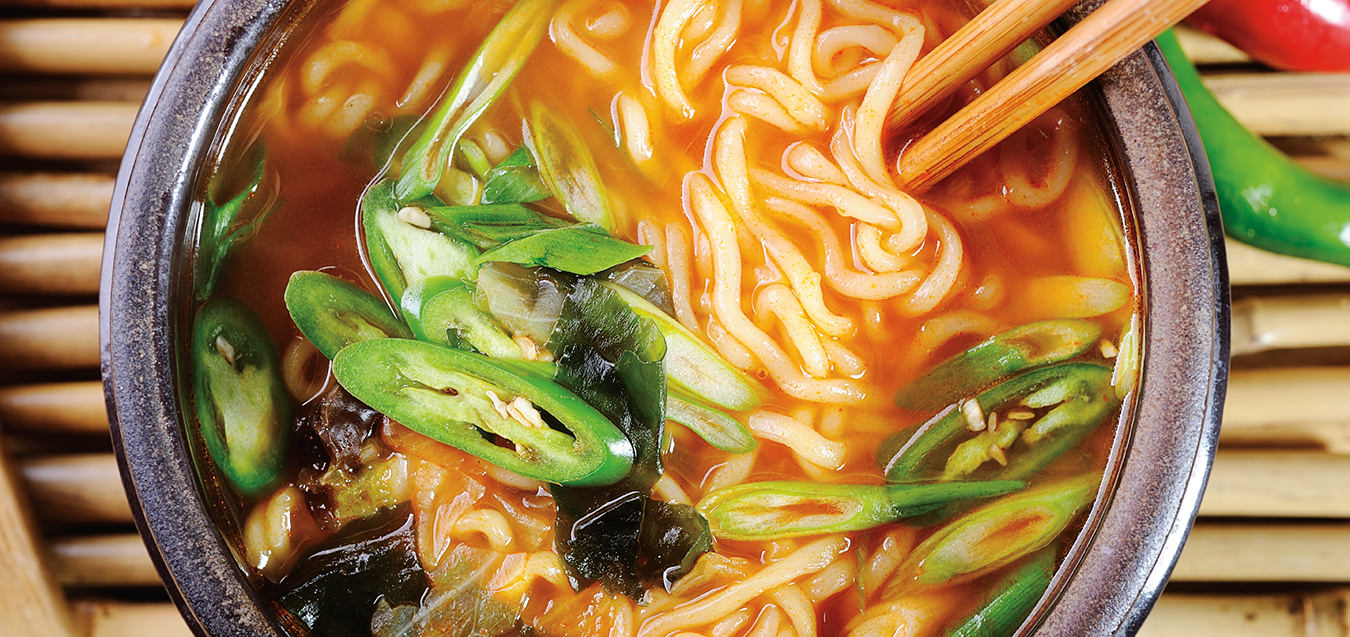Fresh Mint
A palate pleaser.

A summer salad of watermelon, feta, and mint. A silver mint-julep cup, chilled and filled with bourbon, sugar, crushed ice, and gently muddled mint leaves. A simple scoop of mint chocolate chip ice cream.
Mint plays a key role in many hot-weather pleasures, as the herb is known for its cooling properties and is refreshing to the palate. It enhances everything from sauces to tea, its oil is sought after for medicinal remedies, and certain household cleaners have a minty aroma. After a meal, mint does a fine job of cleansing the palate. It’s the default toothpaste flavour for a reason: “minty fresh” is an appealing quality indeed.
While peppermint and spearmint spring to mind as the most obvious varieties, the mint family—Lamiaceae, also known as Labiatae—is much broader. “The mint family is loaded with useful plants, including the majority of important culinary and household herbs,” writes Barbara Perry Lawton in Mints: A Family of Herbs and Ornamentals. These include lavender, rosemary, lemon balm, sage, sweet basil, oregano, thyme, and more. True mints (of the genus Mentha) are just a handful in the bunch.
According to Lawton, these plants have a long history in culinary recipes and medicinal remedies. Egyptian papyrus scrolls dating from 2800 BC have noted their benefits. Mint is woven into culture; Arabs, for example, traditionally offer mint tea as a gesture of hospitality. The plant has even been dragged into politics. “During Prohibition, spearmint was so strongly linked with the bourbon drink called mint julep that mint beds were dug up and ripped out in several southern states,” writes Lawton.
National Geographic’s Guide to Medicinal Herbs explains that Mentha includes over two dozen species, but hybridization has produced more than 2,300 named varieties. The genus is named after Minthe, a nymph in Greek mythology with whom Hades, the god of the underworld, fell in love. As one version of the tale goes, Persephone, the jealous wife of Hades, turned the nymph into a diminutive plant. In turn, Hades tried to console Minthe by scenting her small, green leaves.
While the lore of Minthe is dramatic, the herb itself is intrinsically calming. The aromatic leaves of the peppermint plant and the oil they contain have long been used to aid digestion and stomach ailments. Guide to Medicinal Herbs reports that in medieval times, “mint steeped in wine or vinegar made an effective mouthwash, and mint leaves applied to the temples were an early headache remedy. In England and the American colonies, mint was an herb of choice for treating indigestion, flatulence, colic, heartburn, nausea, headaches, fevers, and colds.”
Today, a steaming cup of peppermint tea taken as a digestif after a meal instantly hits the spot. While a teabag of the dried herb will do, there’s nothing like a tisane made with the plant’s sprightly green leaves. Luckily, mints are great candidates for container gardening, so are easy to keep on hand. Both peppermint and spearmint spread easily by runners and have a tendency to take over gardens, making containers ideal. Mints are perennials, and they do well in full sun and partial shade.
When preparing mint tea, “the trick is to be generous,” writes Nikki Duffy in Herbs: The River Cottage Handbook. “Don’t bother making mint tea with less than 3 large sprigs per cup, at least 10 if you’re making a pot.” With a pinch of sugar, this makes a reviving drink. “The mintiness seems to give a little buzz all of its own.”
If you’re buying mint at the supermarket, Duffy notes that it will likely be spearmint. That’s perfect for mint tea, as it’s generally sweeter than peppermint; the latter’s sharper, more penetrating flavour is good in syrups and desserts. (Think candy canes and after-dinner mints.) For everyday use, spearmint is a good all-rounder, enhancing the flavour of fresh peas or buttered new potatoes. Use either in mint sauce or mint jelly, which traditionally accompanies roast lamb, and roughly chop it up to perk up a fruit salad and complement fresh strawberries.
Mint can be found in cuisines across cultures. Dried mint is a common ingredient in Greek, Turkish, and Arabic cuisines, adding what Duffy calls “almost a smoky tea-like flavour” to kebabs, soups, and more. And in Southeast Asia, the fresh herb’s cool green leaves balance dishes with an abundance of chilies. In Laos, for example, mint tames fiery minced-meat salads, while in Vietnam, the herb can be found tucked into fresh rice-paper summer rolls.
And then, of course, there are cocktails. Elegant and refined, the mint julep has been the traditional beverage of the Kentucky Derby for almost a century. The drink is topped with a sprig of mint and served with a short straw to ensure a whiff of the herb’s glorious scent. Mint is also synonymous with mojitos; muddled with lime and sugar and topped with white rum and soda, the cocktail conjures the sunshine of Cuba.
Hot sun. Cool herb. However you muddle it, steep it, or chop it up, mint means one thing: refreshment.




